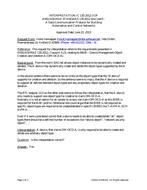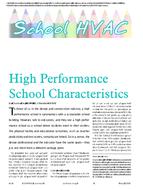Click here to purchase
Building energy modeling (BEM) can be a powerful tool in the design of high performance buildings (HPBs). However, as code requirements become more stringent and energy efficiency targets more ambitious, modelers are struggling to keep up with tightening project timelines and increasingly complex design features. New technologies can require significant time for research, prototyping, and development of modeling solutions. Additionally, code compliance documentation can be time-consuming but provides limited value to the design process. The time spent on these tasks can end up being a significant component of project soft costs, thus diminishing the business case for BEM. Previous attempts have been made to simplify the process of analyzing groups of Energy Saving Measures (ESMs), but they are limited in customizability and programmability for complex measures.
This paper proposes an automation workflow capable of optimizing large scale parametrics to inform building design and generating code and beyond-code compliance documentation. The authors developed a Python module to share and automate numerous repeatable BEM tasks using predefined data models for simulation data exchange using the EnergyPlus engine. The combined use of a programming interface with EnergyPlus allows for the repeatable deployment of complex design measures and custom control sequences that have historically been significant pain-points for BEM practitioners. The Python module can also generate reporting documentation for code and beyond code compliance. A case study demonstrates how using this automation workflow allows design teams to maximize value to their clients and improve the overall value proposition for BEM.
Citation: ASHRAE/IBPSA-USA Bldg Simulation Conf, Sept 2020
Product Details
- Published:
- 2020
- File Size:
- 1 file , 2.5 MB
- Product Code(s):
- D-BSC20-C055


